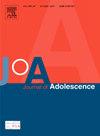Navigating Complex Transitions Through School and Work during Crises in Urban Ethiopia
Abstract
Introduction
The school-to-work transition is often thought of as a linear pathway, but for many adolescents this is not the case. In recent years, young people in Ethiopia have lived through recurrent crises, including conflict and the COVID-19 pandemic. Yet there is limited longitudinal research that explores the impact of these recurrent, interconnected crises on young people's school-to-work transitions. This article addresses this study gap by exploring how adolescents and young people in urban Ethiopia navigate their educational and working lives during interconnected crises.
Methods
The article uses a qualitative longitudinal approach with data involving 32 adolescents (aged 12–19 years during the first round of interviews), 24 caregivers and 35 key informants, across a 4-year period (2017–2021).
Results
Young people's transitions through education and work are complex, rarely forming linear pathways. Education and work operate in tandem with each other, providing key skills for young people's futures. Over time, work becomes viewed as increasingly important to young people's psychosocial well-being and economic empowerment, especially when education is seen as less secure. In the context of increasing instability, young people's aspirations are becoming more uncertain.
Conclusion
To support young people to successfully navigate their school and working lives, a multidimensional approach is needed. This requires greater flexibility both within school and workplaces, financial incentives to stay in education and financial assistance to support insecure households, and individual and group mental health counselling and psychosocial support.


 求助内容:
求助内容: 应助结果提醒方式:
应助结果提醒方式:


